Free Video River Fly Fishing Course
20+ instructional videos, shot in 4k. Free to all new and existing newsletter subscribers – Click Here!

What Are Buzzers
The term buzzer refers to anglers flies which imitate the pupa of the aquatic midge. Every still water in the UK contains aquatic midges, and on the more acidic large stocked reservoirs they can often be a staple food for trout. Midges are essential for trout as they are one of the few insects that are present in all their forms (larvae, pupa and adult) on virtually every day of the year. Although their numbers tend to peak during summer, they still hatch in Winter and can often result in sporadic surface activity for an hour or so during the day.
Lifecycle Of The Midge
Over the years as tiers develop new patterns, the term buzzer has evolved to encompass all manner of different flies, and there is a vast choice of colours and dressings and that represent different stages of the lifecycle.
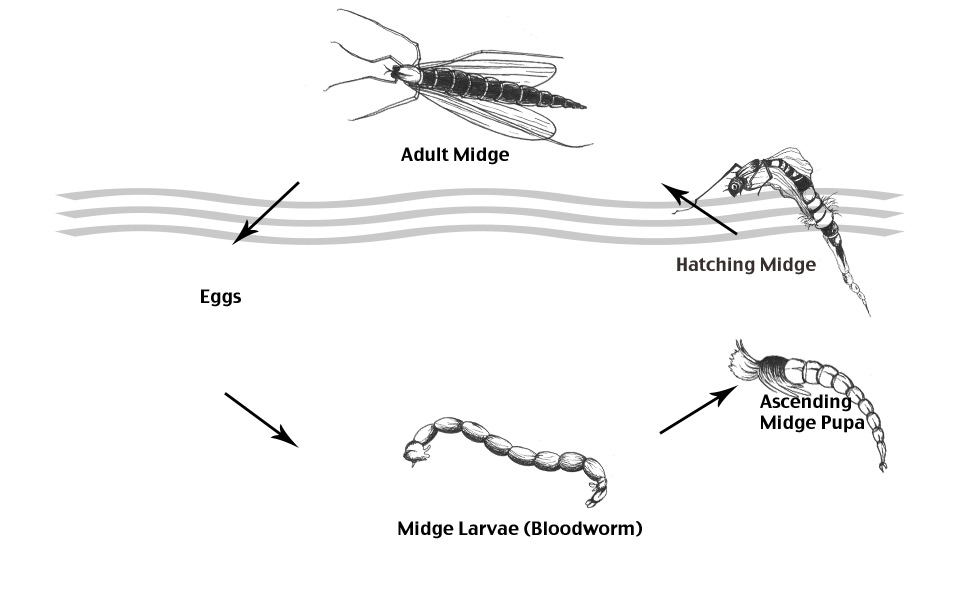
Key Flies
When & Where To Use Buzzers
Buzzer fishing is often associated solely with still water fishing. Buzzers can be very successful in rivers where fish are sipping on midges in slow pools. Using buzzers on chalk streams has proved very successful on slow days during the summer months when the fish are selectively feeding on midges. For this article, however, I am focusing on fishing buzzers on still waters.
Rises & Sign Of Buzzer Activity
A big buzzer hatch is unmistakable; the air is thick with midges after they hatch out the surface film. During lesser hatches or when the fish are feeding on the pupa just below the surface, there may be less adult midges in the air. In the absence of other apparent hatches, if trout are gently breaking the surface in a head and tail type rise, midges are usually the food they are feeding on. There are times when fish are feeding on midge pupa or bloodworms with little if any rises. In these conditions getting your depth correct is the key, using a combination of weighted flies, leader length and sinking lines to present your flies at different depths is instrumental in your success.
Rises
Rises to emerging buzzers, adults and pupa just below the surface are generally gentle. Anglers just sea the ring of a sip or the head and tail or fin of the fish gently breaking the surface.
Leaders For Buzzer Fishing.
In general, if you want to fish on the surface, then copolymer leaders are best as they won’t drag your flies under the surface. If you wish to get your flies down to a depth, then fluorocarbon may be a better option as it sinks and helps pull the flies down for you. In terms of leader length, this varies greatly depending on how you fish your buzzers. For a single fly, a 9 or 10 foot leader may surface. If you fish a team of buzzers, then a long leader up to 20 feet or even longer may be used.
Techniques
Single Fly
There’s nothing wrong with fishing a single buzzer on the end 10ft of leader. For those new to fly fishing, this quick to set-up and straightforward approach is often the best way to get started. Longers leaders can be harder to cast correctly, and droppers tend to tangle, this can result in spending a great deal of time problem solving instead of fishing. After you get used to fishing and casting a single fly and shortish leader, you can progress to some of the other methods described here.
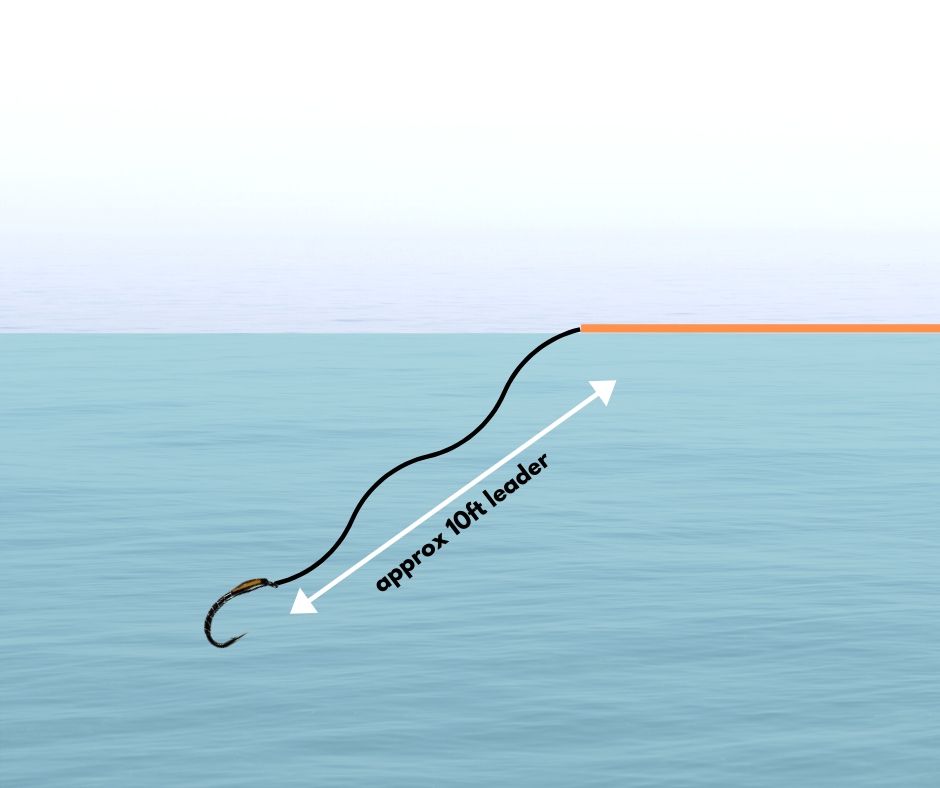
Under The Ressie Dink
This is a superb method when the fish are responding to static flies such as in very cold or warm weather. The ressie dink is specially designed for this and acts as an indicator fly on the surface allowing you to hang a buzzer underneath it. The Ressie Dink also has a midge profile so rises to the ressie dink are common.
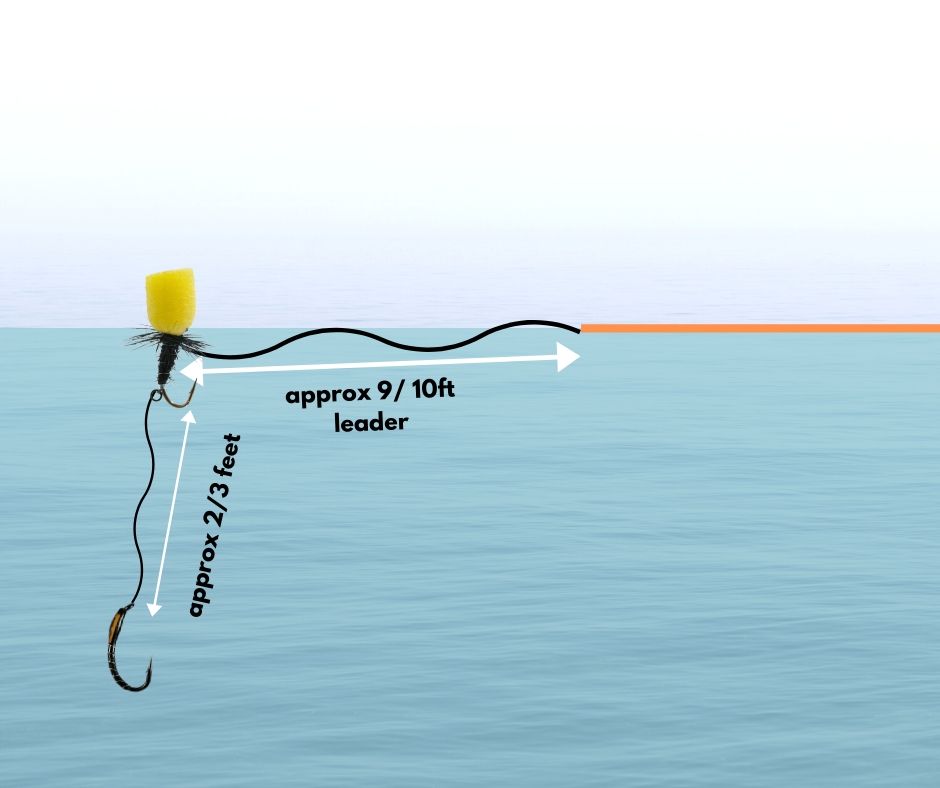
Washing Line
When fish are up on the surface, the washing line method allows you to fish multiple flies in and around the surface. A buoyant foam fly such as a Booby is tied on the point with 2 or 3 droppers (around 6 – 8 inches in length) coming off at intervals of around 5 feet. The flies can be fished static or with a slow retrieve, but if fishing static, you need to keep in touch with the flies to make sure you feel the takes. The beauty of this method is the Booby can get takes and also act as an attractor fly bringing fish into the zone before they take one of your buzzers.
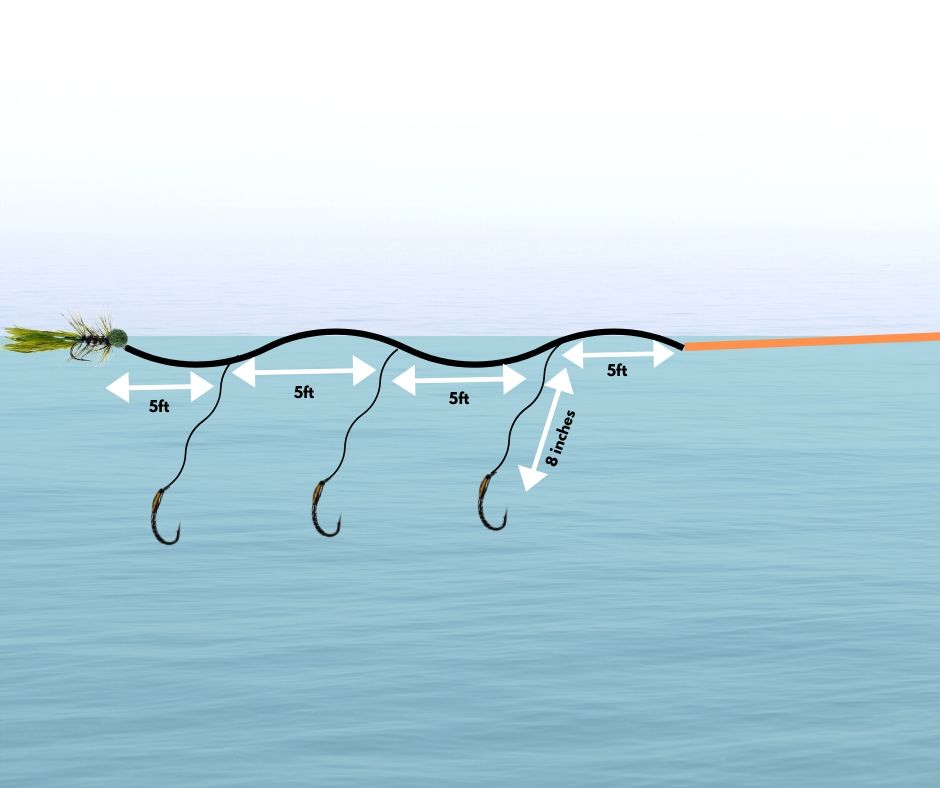
Team Of 3 Straight Line
This is an excellent method if you are unsure of the depth the fish are feeding. A heavy buzzer on the point with droppers at 5 or 6 foot intervals works your flies at different depths. If you consistently keep catching on one of your flies, you can then adjust your set up to get more flies down to that particular depth. It’s important to fish with a slow retrieve but just enough so you keep in contact with the flies to feel any takes. It’s good practice to hang the flies in the water for a while and gently lift the rod tip which can trigger a take just before you recast. A long leader is required for this method so it may not be suitable for more novice anglers.
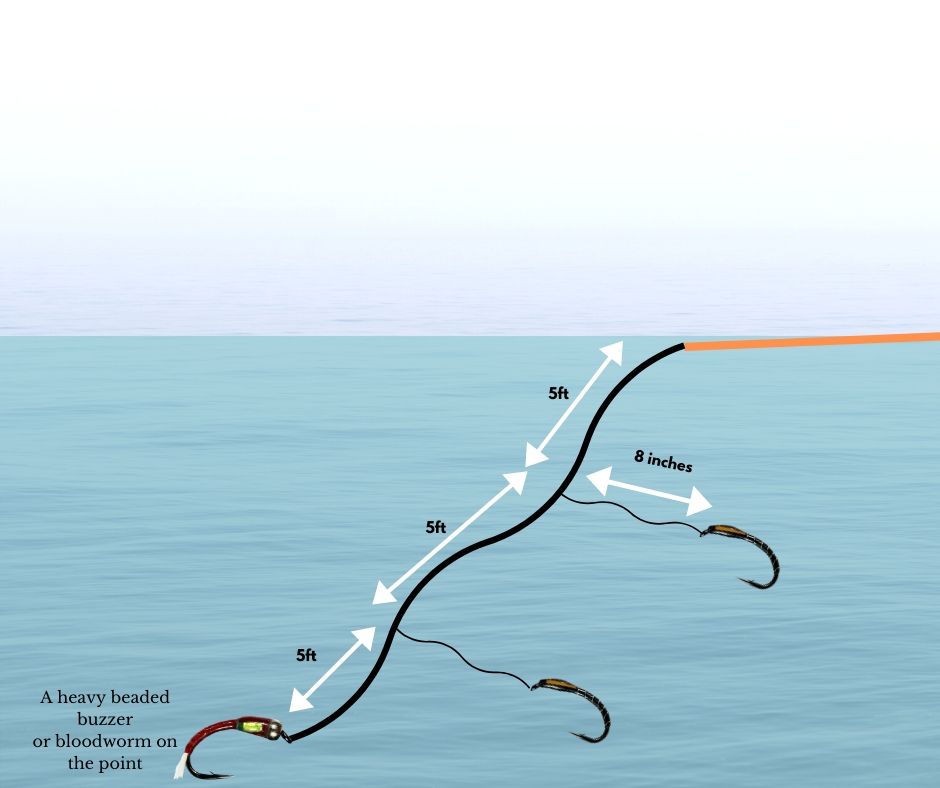
Instant Retrieve
This is a method I stumbled upon in small still waters when the trout are near the surface but seem unresponsive to anything cast about them. It’s not strictly a buzzer technique and any small nymph such as a diawl bach or pheasant tail works. Cast towards the fish in question and move the fly with a long pull as it is hitting the water. The secret here is the fly lands while it is moving, the fish can sometimes grab it instantly, almost in involuntary reaction — a useful method when things are frustratingly slow.
Retrieves
In general, a retrieve when buzzer fishing is slow and steady. A figure of 8 retrieve is particularly useful for buzzer fishing. A sink and draw retrieve is also worth trying to mix things up – this consists of a long steady pull of the line to raise the fly. Followed by a pause in the retrieve in which the fly naturally sinks back down through the water column. This rising and falling action in the fly can trigger a feeding response in the fish.
Detecting Takes
Ideally, you should see the take before you feel it. You can watch the small loop of line hanging out of the tip of the rod, if it suddenly straightens then strike. You can watch the fly line in the water for any unexpected movement. In an ideal world, because you are only retrieving slowly, you should be striking into takes you see before you feel them, however, this may be difficult for the beginner. As long as you are keeping a nice tight line, and you are in contact with the flies you should still hook takes that you don’t see and feel through the rod. With practice you will start to notice takes before you feel them.
And Finally
You can sum up much of this article by remembering two key things – firstly most of your buzzer fishing needs to be slow and steady on the retrieve. Secondly, as with much still water fishing, it’s all about depth. Use a combination of weighted flies, leader length and sinking fly lines to regulate the depth at which you are fishing.
Free Video River Fly Fishing Course
20+ instructional videos, shot in 4k. Free to all new and existing newsletter subscribers – Click Here!



